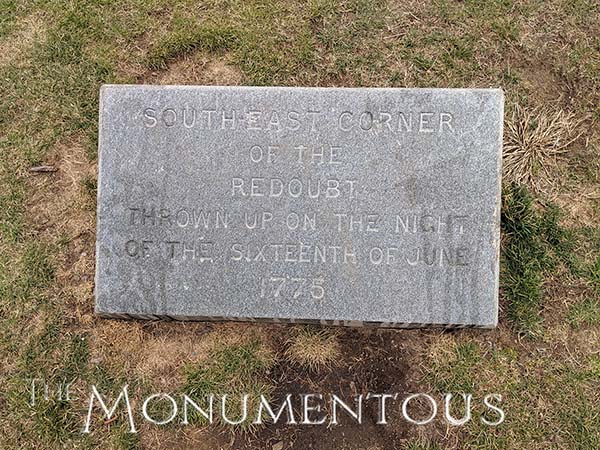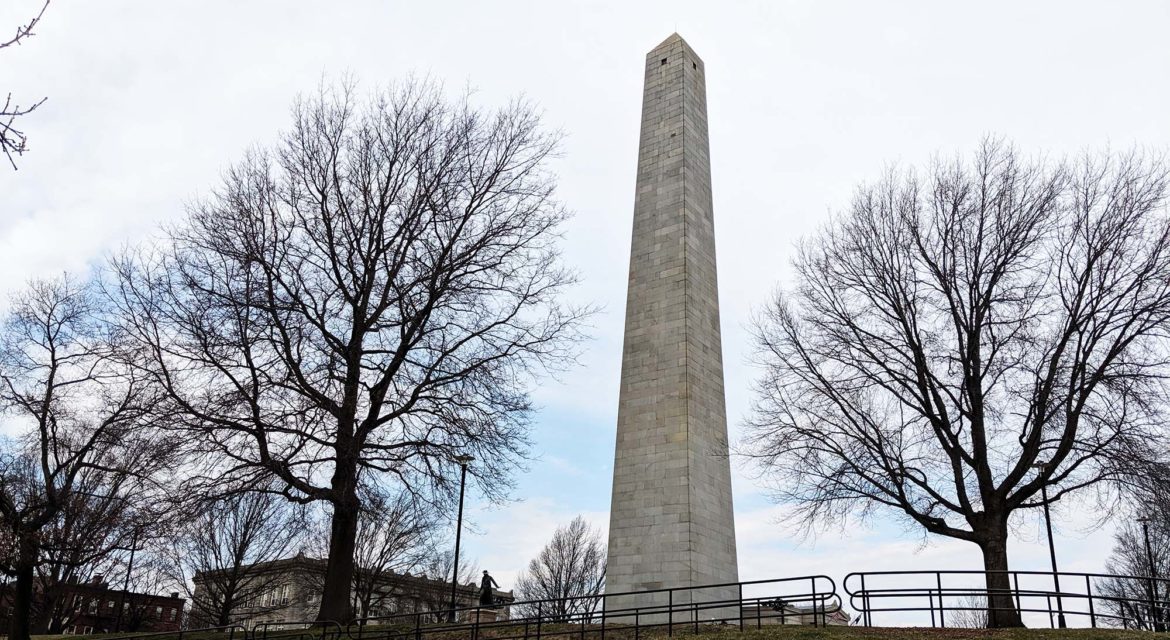 The Battle of Bunker Hill is one of the most famous battles of the American Revolution. Located on the site of the battle in Boston, Massachusetts, the 221-foot Bunker Hill Monument commemorates this battle and features many exhibits about the battle along with experiences that are tied to the past and present of the city. This combination has enabled the Bunker Hill Monument to become an essential element of the community while attracting audiences from across the country.
The Battle of Bunker Hill is one of the most famous battles of the American Revolution. Located on the site of the battle in Boston, Massachusetts, the 221-foot Bunker Hill Monument commemorates this battle and features many exhibits about the battle along with experiences that are tied to the past and present of the city. This combination has enabled the Bunker Hill Monument to become an essential element of the community while attracting audiences from across the country.

“Don’t Fire Until You See the Whites of Their Eyes!”
 In 1775, tensions between American colonists and the British reached a zenith. After hearing that the British had plans to fortify the Charlestown peninsula, the Americans decided to get to the peninsula first to compel the British to leave Boston. A temporary defensive fortification was constructed on the lower, more centrally located Breed’s Hill, rather than on Bunker Hill, which had been ordered by American authorities.
In 1775, tensions between American colonists and the British reached a zenith. After hearing that the British had plans to fortify the Charlestown peninsula, the Americans decided to get to the peninsula first to compel the British to leave Boston. A temporary defensive fortification was constructed on the lower, more centrally located Breed’s Hill, rather than on Bunker Hill, which had been ordered by American authorities.
After the British saw the fortification on the morning of June 17, they decided to attack. Men were ordered to hold their fire so that their musket fire would have its most devastating effect. Some attribute Prescott to saying the famous Revolutionary War phrase, “Don’t fire until you see the whites of their eyes” during the battle. Although the British army won the battle, the Battle of Bunker Hill proved that American forces could fight effectively against the British.
In the years following the battle, the hill became sacred ground. In 1794, a monument was erected on the hill to Joseph Warren who was a victim of the battle. Eventually, it was decided that a monument should be built to honor all of the people who died during the battle. On June 17, 1825, the fiftieth anniversary of the battle, the cornerstone of the Bunker Hill Monument was laid by the Marquis de Lafayette.
Granite used to erect the monument was quarried in nearby Quincy, but construction of the monument was frequently halted as funds were depleted. It was finally finalized in 1843 and has been open to the public ever since. The Bunker Hill Monument is built on the crest of the hill, which was the actual site of the famous encounter. It was also the first public obelisk in the United States designed to commemorate the Battle of Bunker Hill.
The history that is associated with this area in Boston is celebrated in various ways across the site, although it also allows visitors to get a very real sense of the present of the city.

Above Boston and Around the Bunker Hill Monument
There are 294 steps to the top of the Bunker Hill Monument that presents visitors with an incredible 360-degree view of Boston. The small chamber at the pinnacle of the climb also features a metal grate embedded in the ground, which sits above a 200-plus-foot shaft that drops away to the very base of the monument.
 The historic 1901 Bunker Hill Lodge adjoins the Monument and houses a statue of Joseph Warren, portraits, and a Revolutionary War cannon, “The Adams.” There is an information desk inside where visitors can get a Boston National Historical Park brochure, and there are usually park Rangers on duty. Rangers also conduct 20-minute lectures about the Battle of Bunker Hill at the top of every hour from 10 AM to 4 PM.
The historic 1901 Bunker Hill Lodge adjoins the Monument and houses a statue of Joseph Warren, portraits, and a Revolutionary War cannon, “The Adams.” There is an information desk inside where visitors can get a Boston National Historical Park brochure, and there are usually park Rangers on duty. Rangers also conduct 20-minute lectures about the Battle of Bunker Hill at the top of every hour from 10 AM to 4 PM.
Located across the street from the Monument grounds, the Bunker Hill Museum contains exhibits that are housed in the old Charlestown Branch building of the Boston Public Library. Visitors can learn more about the Battle of Bunker Hill, the construction of the Bunker Hill Monument and the history of the Charlestown neighborhood.
 Across the site are markers that indicate the history and movements associated with the battle. They include markers highlighting the South-East Corner of the Redoubt, the North-East Corner of the Redoubt and more, all of which provide visitors with an entirely different context of the battle.
Across the site are markers that indicate the history and movements associated with the battle. They include markers highlighting the South-East Corner of the Redoubt, the North-East Corner of the Redoubt and more, all of which provide visitors with an entirely different context of the battle.
These experiences have helped to define the economic and cultural impact that the Bunker Hill Monument has directly and indirectly enabled across the site and all of Boston.

A Symbol of the Times
 The Bunker Hill Monument is the last stop on the Freedom Trail and is also is part of Boston National Historical Park. It was designated a National Historic Landmark in 1961, it was added to the National Historic Register in 1966. These distinctions are just part of the reason it has become such an important element of and attraction for the community though.
The Bunker Hill Monument is the last stop on the Freedom Trail and is also is part of Boston National Historical Park. It was designated a National Historic Landmark in 1961, it was added to the National Historic Register in 1966. These distinctions are just part of the reason it has become such an important element of and attraction for the community though.
No admission charge applies to the museum or monument, allowing anyone to engage with the monument at any time. The monument is also featured in various maps and guides to the city and is a popular stop on the Old Town Trolley. It is easily accessible via the Boston subway system, providing both residents and visitors with an easy means of visiting and engaging with the landmark.
Over the years, the Bunker Hill Monument has been embraced as a symbol of the times, cementing a legacy that highlights how landmarks can mean something so significant to both residents and visitors.

History of the United States and a Legacy for Boston
 Every year, hundreds of thousands of visitors come to the Bunker Hill Monument to learn about the battle, climb the monument and become inspired by the history and legacy that the monument represents. While other obelisks across the world are tied to the history of a nation, few feature the same type of history and experiences. This combination has enabled the Bunker Hill Monument to exemplify what it means to utilize the history of a space in order to make such a notable economic and cultural impact on the present and future of a city and country.
Every year, hundreds of thousands of visitors come to the Bunker Hill Monument to learn about the battle, climb the monument and become inspired by the history and legacy that the monument represents. While other obelisks across the world are tied to the history of a nation, few feature the same type of history and experiences. This combination has enabled the Bunker Hill Monument to exemplify what it means to utilize the history of a space in order to make such a notable economic and cultural impact on the present and future of a city and country.

